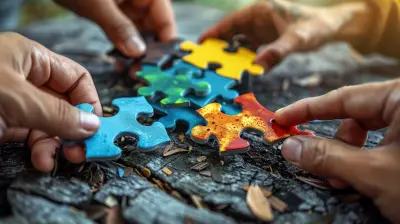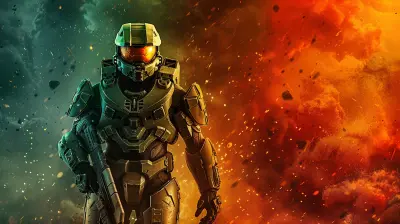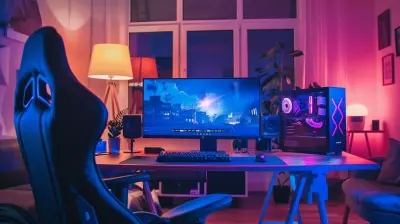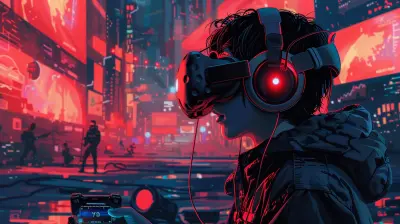The Evolution of Female Characters in Video Games
16 February 2025
Let’s face it—video games and their portrayal of female characters have had… an interesting history. Kind of like that awkward teenage phase everyone goes through where nothing quite makes sense, and you’re just trying your best. For the longest time, women in games were treated more as props than actual characters. They were either damsels in distress or pixelated pin-up models squeezed into outfits so skimpy that physics itself seemed offended.
Fortunately, as the gaming industry matured and grew (and gamers collectively raised their eyebrows at some creative decisions), female characters started getting the respect they deserve. Don’t get me wrong—there’s still room for improvement, but we’ve come a long way from the days of “help, random mustachioed dude, save me!”
In this article, we’ll take a hilarious yet insightful stroll down memory lane, tracing the evolution of female characters in video games and why they’ve gone from cardboard cutouts to complex, relatable protagonists. 
The Early Days: The Princesses, the Props, and the Problem
Let me paint you a picture: It’s 1981. Big hair is in, Walkmans are revolutionary, and Nintendo releases Donkey Kong. While everyone’s obsessed with a certain Italian plumber jumping over barrels, there’s a lady named Pauline awkwardly waving her arms at the top of the screen, waiting to be “rescued.” And boy, did that set the tone for years to come.Female characters in the ‘80s and early ‘90s were usually damsels in distress. Super Mario Bros. had Princess Peach (who’s been kidnapped so many times I’m starting to think she has Stockholm Syndrome). The Legend of Zelda had Princess Zelda, who was… basically Peach but in a tunic. These characters weren’t really characters—they were trophies. The goal was simple: Beat the big bad, save the girl, roll credits.
Where were the butt-kicking heroines? The relatable women? The ones who could hold their own in a fight? Oh, they were coming—but the industry had to get through its awkward teen years first. 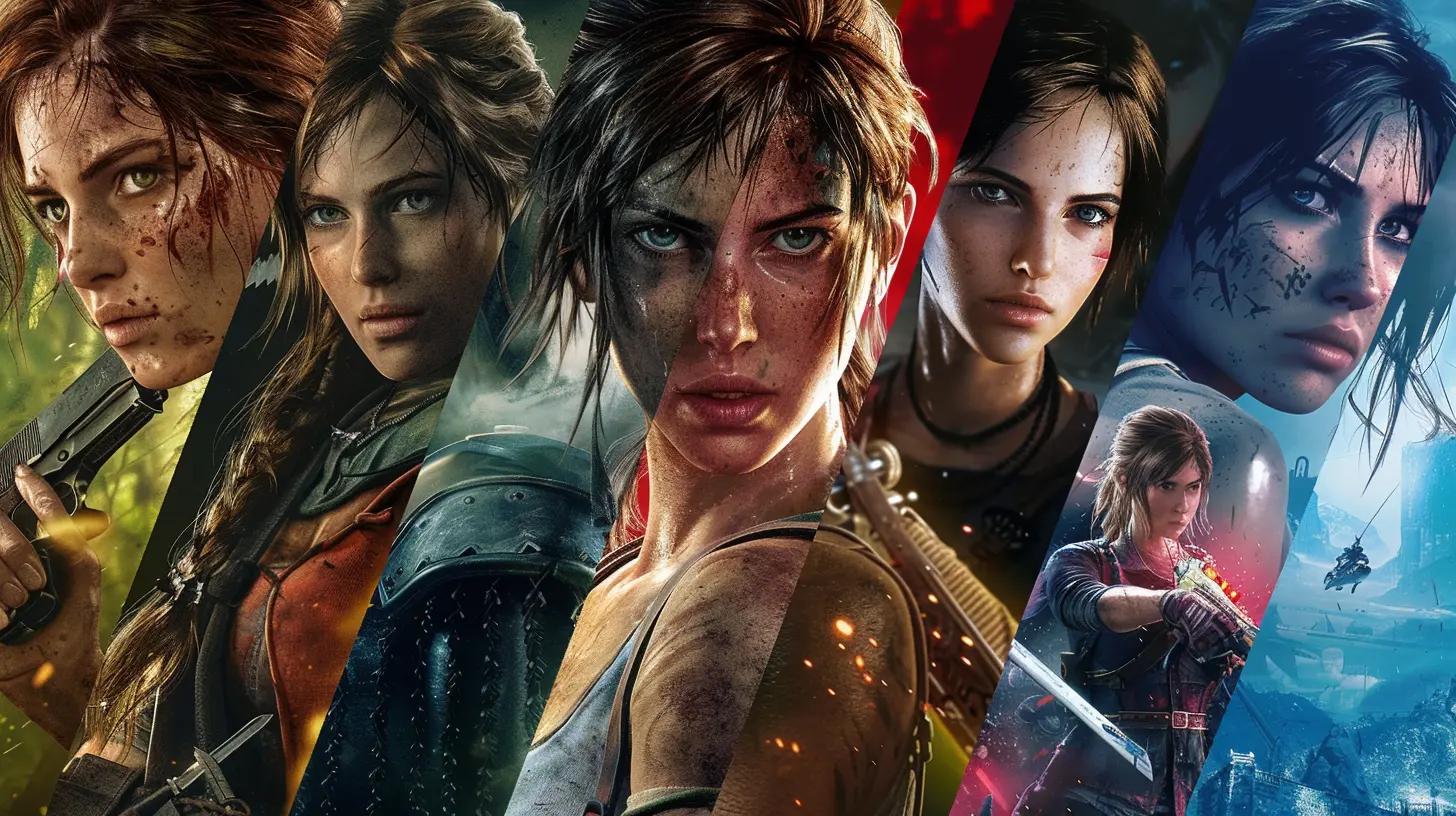
The ‘90s: The Birth of the Badass (But Also, Why So Much Spandex?)
Enter the ‘90s, the decade of grunge music, baggy jeans, and the rise of 3D graphics. It was during this time that female characters started stepping out of the sidelines and onto the front lines. And leading the charge? None other than our girl Lara Croft.When Tomb Raider dropped in 1996, Lara Croft was a revelation. She could shoot, climb, solve puzzles, and raid tombs like nobody’s business. She was smart, skilled, and didn’t need saving. But, uh… let’s address the elephant in the room: her design. Her proportions defied all logic and biology, and I’m still pretty sure she gave chiropractors nightmares.
Lara wasn’t alone, either. Samus Aran from Metroid proved that you didn’t need to look like a supermodel to be a badass bounty hunter (surprise! She was a woman under that armor the whole time!). Chun-Li from Street Fighter had thighs that could crush watermelons—and also stereotypes about women in fighting games.
Still, even as female characters became more capable, the male gaze loomed large. It was like the gaming industry collectively said, “Sure, women can kick butt… but can they do it in high heels and bikinis?” 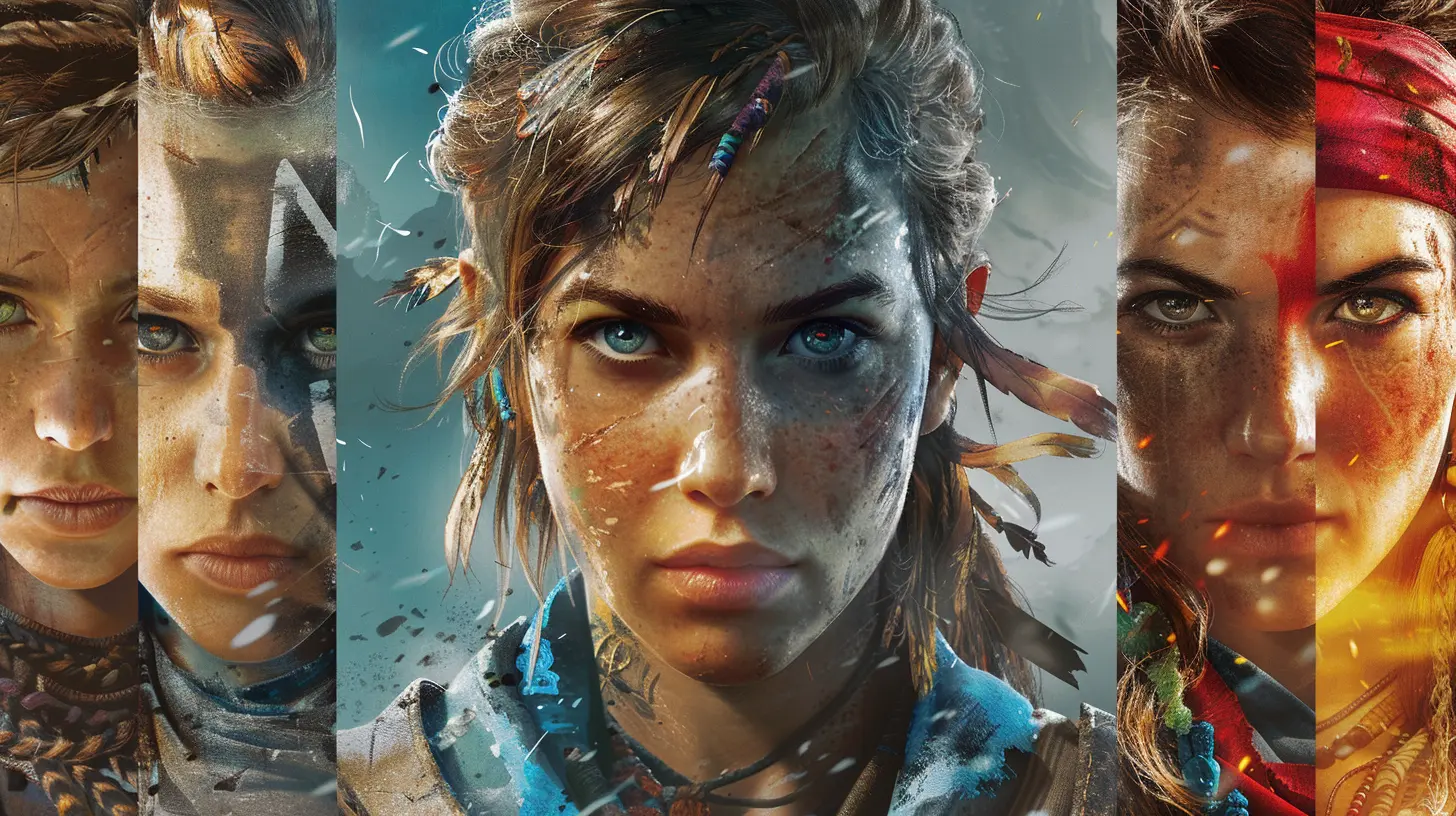
The 2000s: Complexity, Representation, and Less Ridiculous Outfits
Ah, the 2000s—a time when everyone was updating their MySpace profiles and mastering the art of T9 texting. Video games, too, were undergoing a major overhaul. This was the era when storytelling in games went from “an afterthought” to “the main event,” and female characters were finally allowed to be, you know, people.Take Jill Valentine from Resident Evil. By the time Resident Evil 3 rolled around, she wasn’t just another soldier fighting zombie hordes—she had layers. She was clever, resourceful, and someone you could actually root for. Then there’s Yuna from Final Fantasy X, who wasn’t just a “love interest” but had her own agency, struggles, and goals (and don’t even get me started on her in Final Fantasy X-2—hello, pop star transformation!).
What’s notable about this era is that developers started dialing back on the over-sexualization. Sure, there were still some missteps (cough Ivy from Soulcalibur cough), but characters like Alyx Vance from Half-Life 2 showed that you didn’t need a plunging neckline to make an impact. Alyx was practical, witty, and an equal partner in the story. 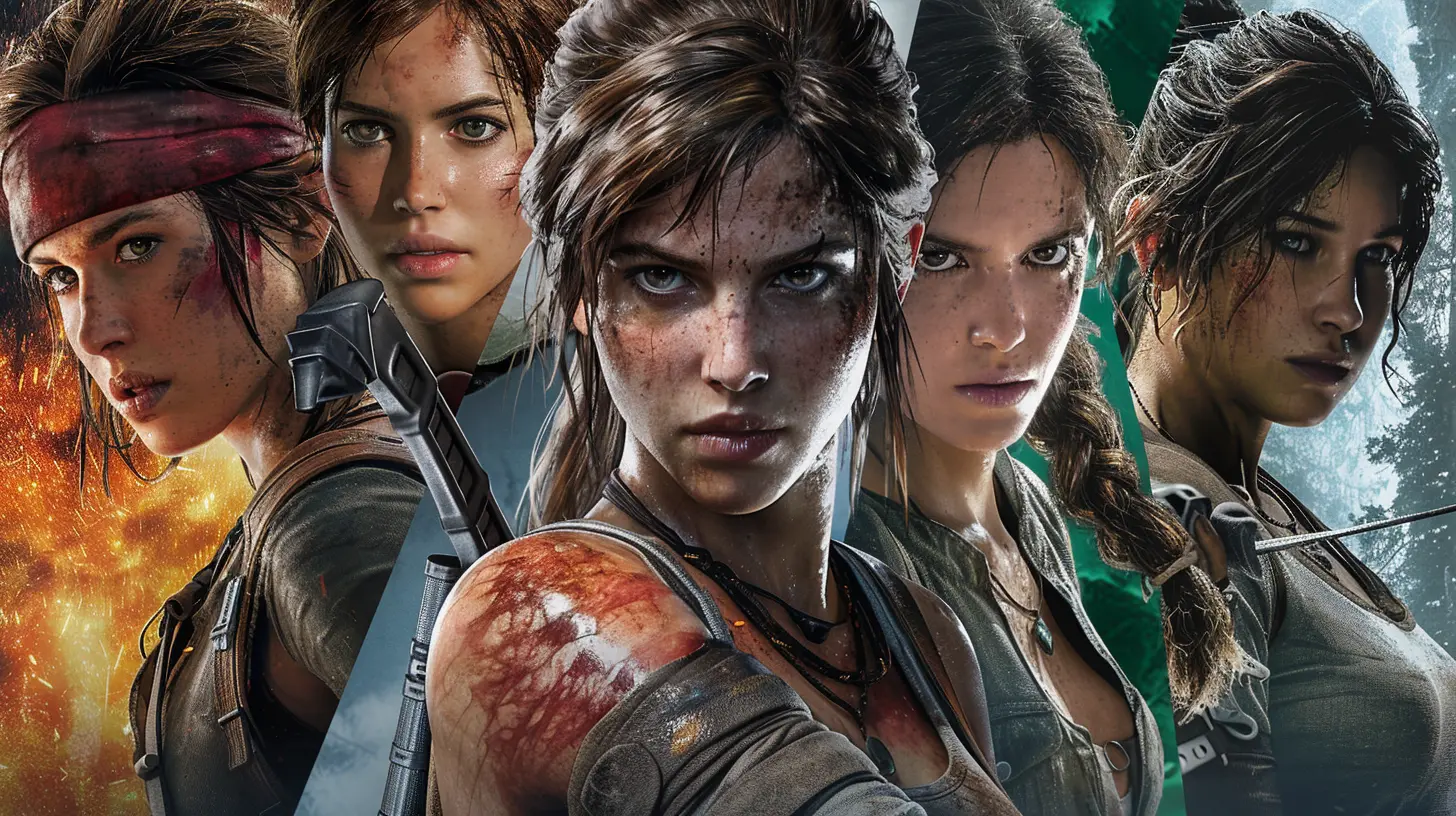
The Modern Era: Queens, Warriors, and Fully Realized Humans
Flash forward to the 2010s and beyond, and it feels like we’ve finally entered the golden age of female representation in games. Developers are no longer treating female characters as afterthoughts—they’re crafting strong, multidimensional women that rival (and often overshadow) their male counterparts.Take Aloy from Horizon Zero Dawn. She’s not just an exceptional hunter and fighter; she’s curious, compassionate, and deeply human. Her story isn’t about being a woman—it’s about survival, legacy, and uncovering the truth. Then there’s Ellie from The Last of Us series, who’s so well-written that you’ll laugh, cry, and scream right alongside her.
But it’s not just about the protagonists. Female NPCs (non-playable characters, for the uninitiated) have also leveled up. Think of characters like Triss and Yennefer from The Witcher 3, who are powerful and complex in their own right. Even supporting roles are getting the same care and attention as leading ones!
And let’s not forget about diversity. Women of color, LGBTQ+ women, and older women are finally stepping into the spotlight. Characters like Nadine Ross from Uncharted: The Lost Legacy and Sera from Dragon Age: Inquisition prove that inclusivity isn’t just important—it’s downright awesome.
But Are We There Yet? Not Quite
Okay, here’s the truth: While we’ve made huge strides, the gaming industry isn’t perfect. There are still moments where female characters feel like they’re ticking a box rather than being truly celebrated. And don’t get me started on the occasional “battle armor” outfits that look like they were designed by someone who’s never seen actual armor in their life.Plus, representation across the board could still improve. While we’re seeing more diverse female protagonists, there are plenty of genres (looking at you, sports games and shooters) where the options feel limited. But hey, progress isn’t a straight road—it’s a bumpy ride, and at least we’re moving in the right direction.
Why This Evolution Matters
You might be thinking, “Why does this even matter? They’re just video games!” But here’s the thing: Representation in media—games included—has a way of shaping how we see the world. When players see strong, relatable female characters, it challenges stereotypes and broadens perspectives.It also sends a powerful message to women and girls everywhere: You can be the hero of the story. You can save the day, slay the dragon, solve the mystery, and look awesome doing it. And that? That’s priceless.
Wrapping It All Up
So, where does that leave us? Well, the evolution of female characters in video games is a testament to how far gaming as an art form has come. We’ve gone from two-dimensional damsels to fully-realized heroines who can stand toe-to-toe with anyone.And while there’s still work to do, the future looks bright. Who knows—maybe the next generation of gamers will grow up in a world where women in games are so diverse, dynamic, and badass that this article will feel like ancient history.
Until then, I’ll just be over here, replaying Horizon Forbidden West and fangirling over Aloy.
all images in this post were generated using AI tools
Category:
Video Game CharactersAuthor:

Lana Johnson
Discussion
rate this article
5 comments
Xylo McIntosh
The evolution of female characters in video games reflects broader societal changes, transitioning from one-dimensional tropes to complex protagonists. This shift has improved representation and narrative depth, enabling players to engage with diverse stories and experiences that resonate across various demographics and cultures.
March 19, 2025 at 5:00 AM

Lana Johnson
Thank you for your insightful comment! I completely agree that the evolution of female characters in video games has mirrored significant societal changes, enriching narratives and providing players with more relatable and diverse experiences.
Henrietta Gutierrez
From pixelated princesses to badass warriors, female characters have tossed the damsel trope into a digital blender! Who knew empowerment could pack such a punch? Game on, heroines!
March 10, 2025 at 3:44 PM

Lana Johnson
Absolutely! It's inspiring to see how female characters have evolved from stereotypes to powerful figures, redefining narratives in gaming. Game on, indeed!
Samuel Brooks
In pixelated realms, she blooms and thrives, From damsels in distress to heroines alive. With strength and depth, her story unfolds, A tapestry of courage, as new legends are told. Empowered, she conquers; her journey's gold.
March 4, 2025 at 5:51 AM

Lana Johnson
Thank you for capturing the essence of female characters' evolution in video games! Your poetic take beautifully highlights their transition from stereotypes to empowered heroines.
Dash McGehee
Fascinating to see how female characters have evolved in video games! Their depth, strength, and diversity inspire players everywhere. Here's to more empowering stories that celebrate women and challenge stereotypes in gaming. Keep leveling up!
February 24, 2025 at 4:42 AM

Lana Johnson
Thank you! I'm glad you enjoyed the article. It's exciting to see how far we've come and the positive impact it has on players. Here's to more inspiring stories ahead!
Evren Griffin
Great article! It’s inspiring to see how female characters have evolved and become more dynamic in gaming.
February 22, 2025 at 5:01 AM

Lana Johnson
Thank you! I'm glad you found the article inspiring—it's exciting to see this evolution in gaming.
